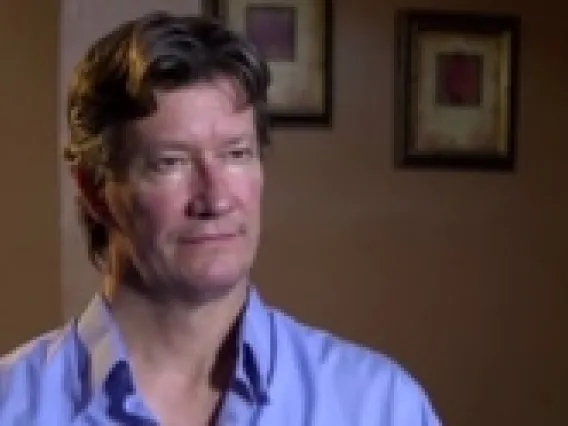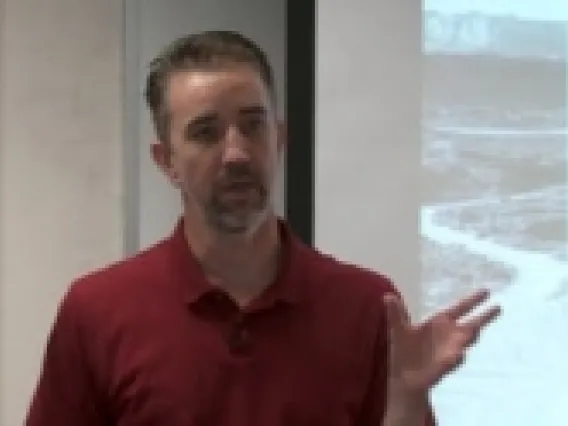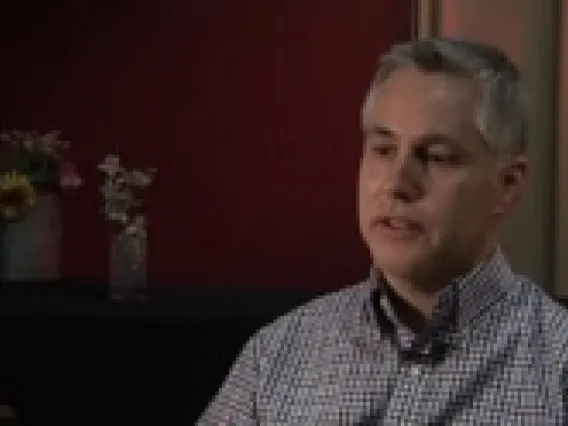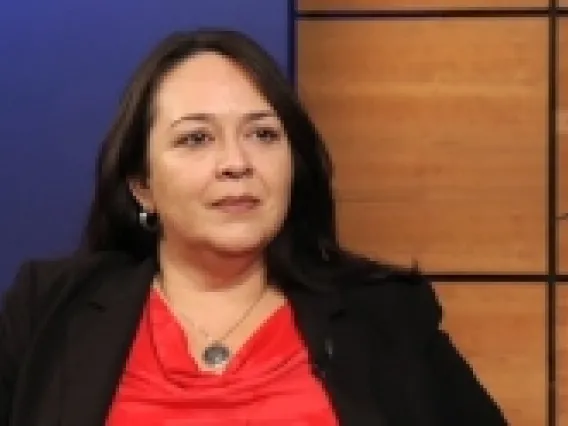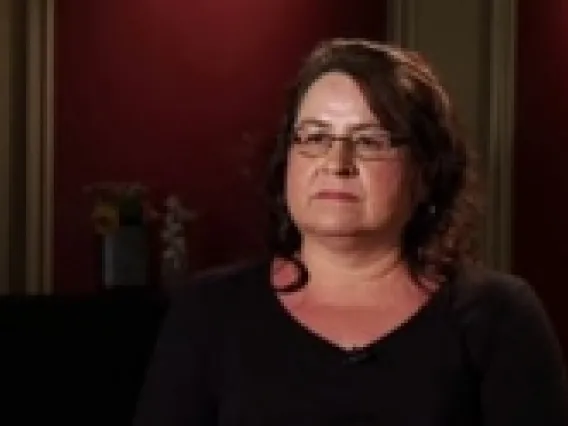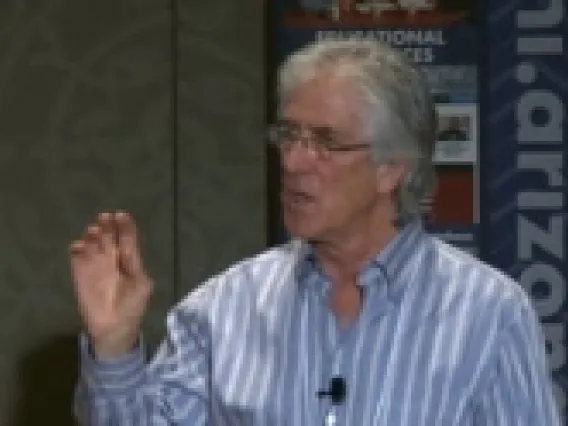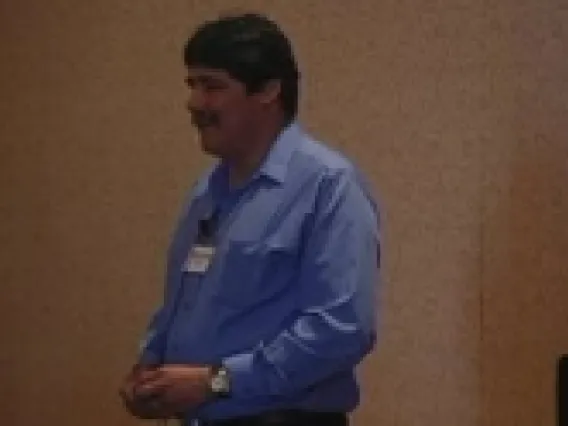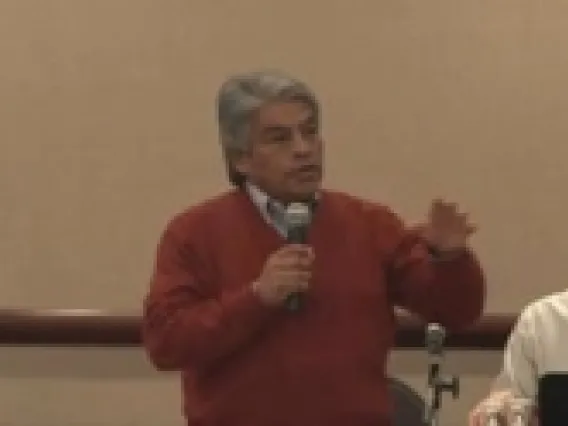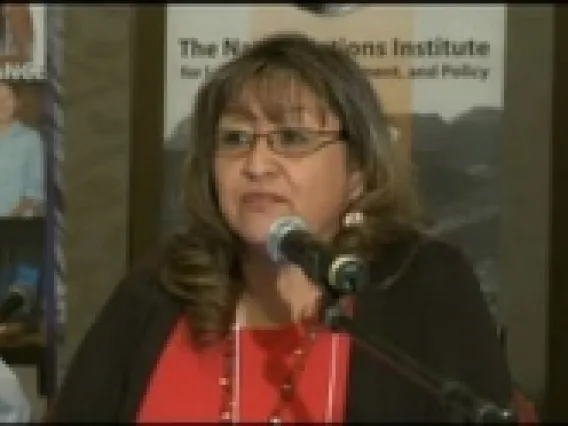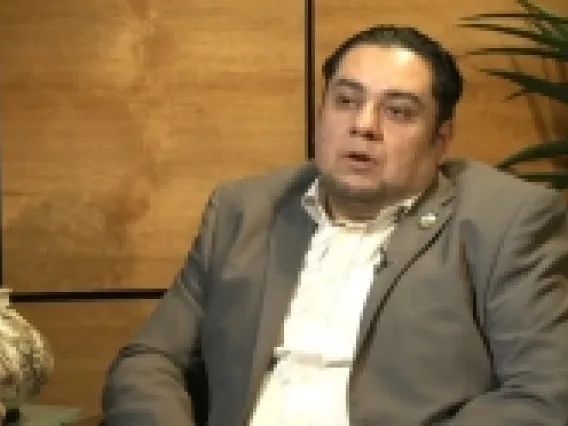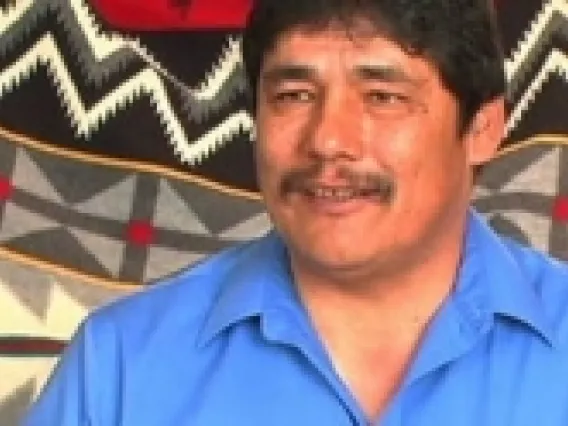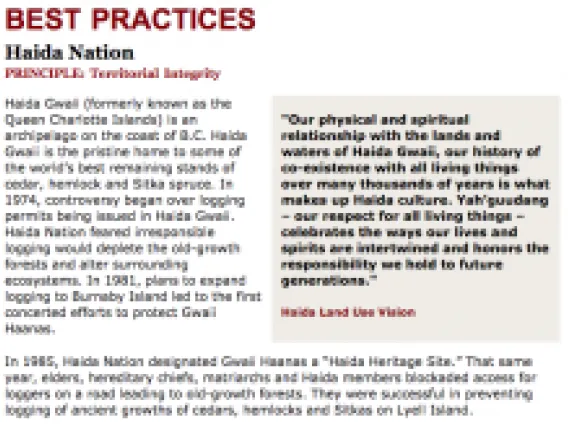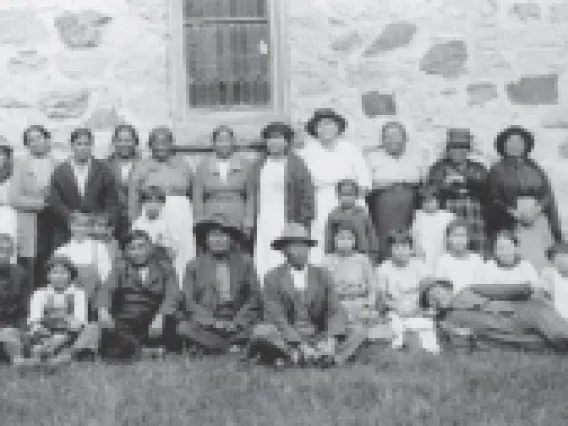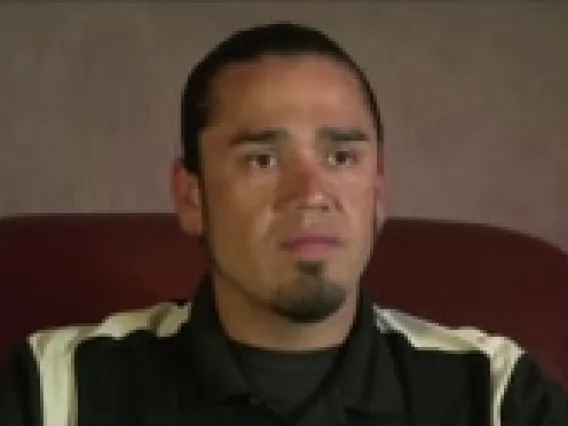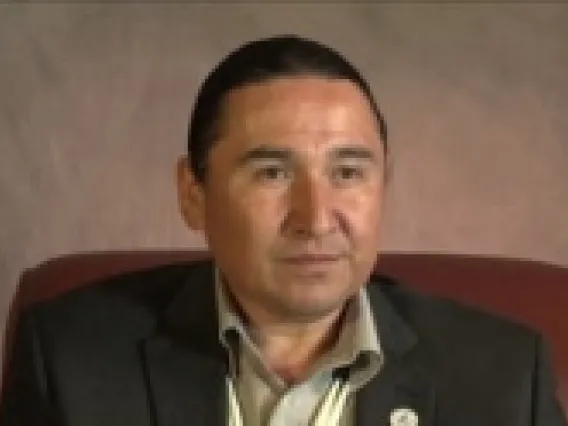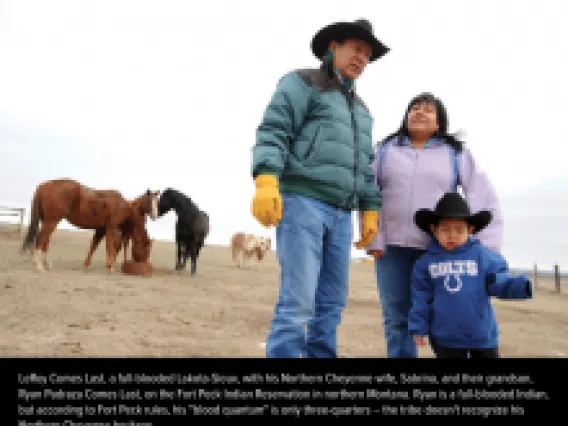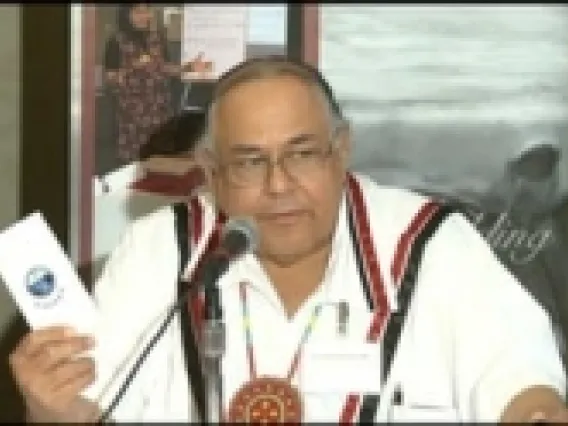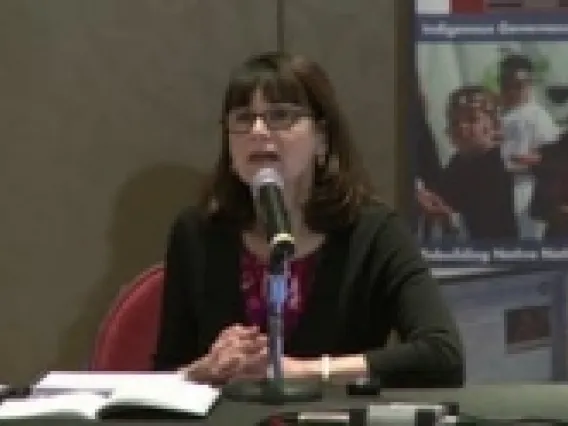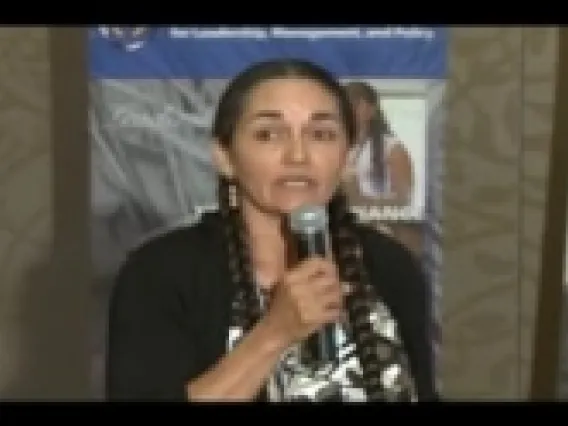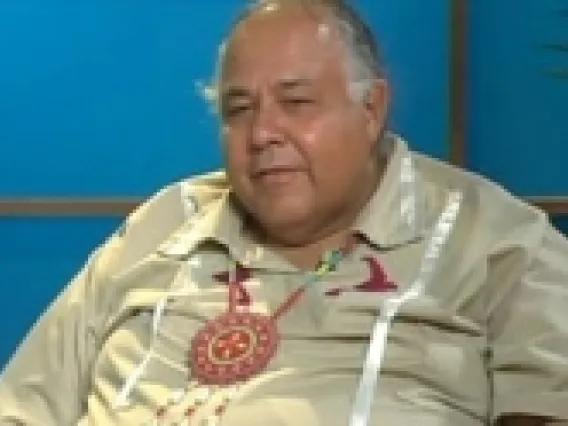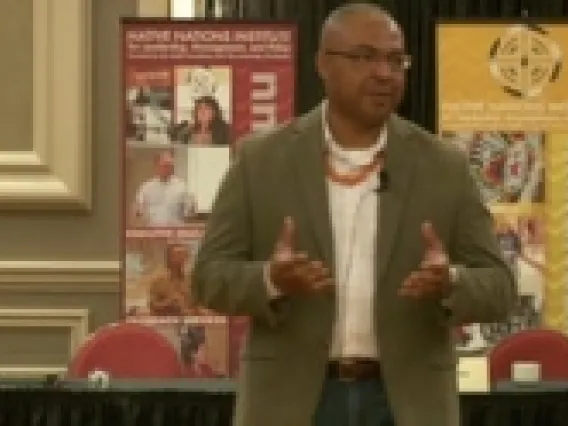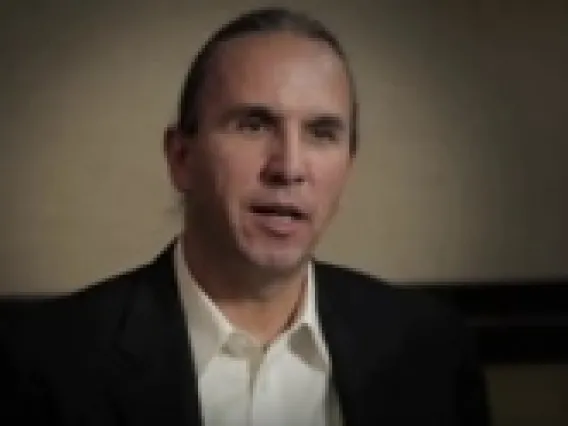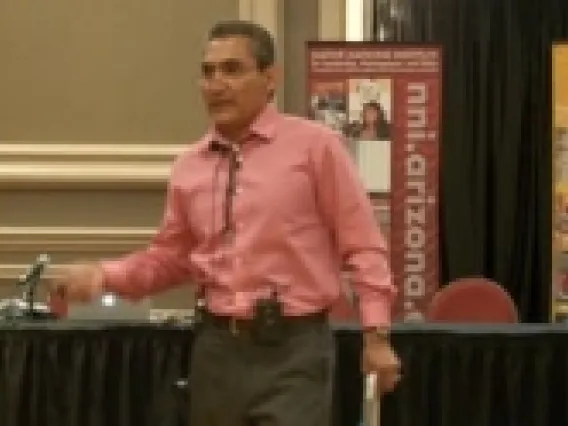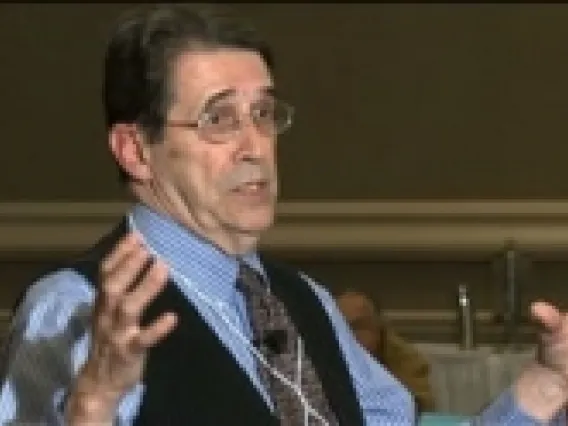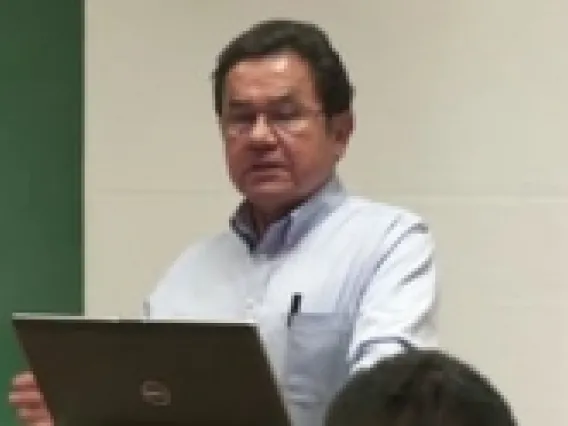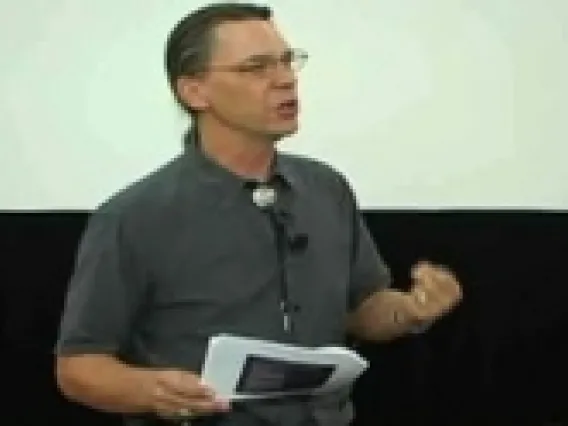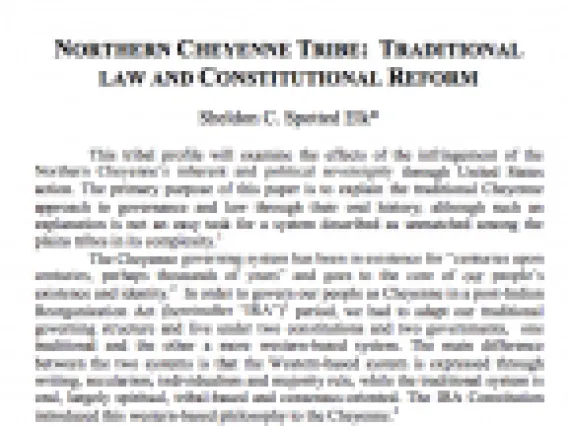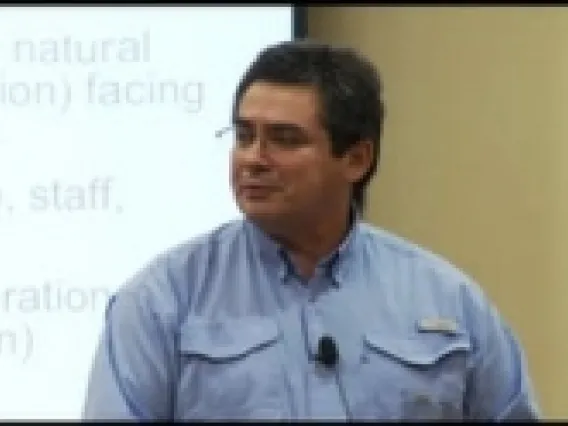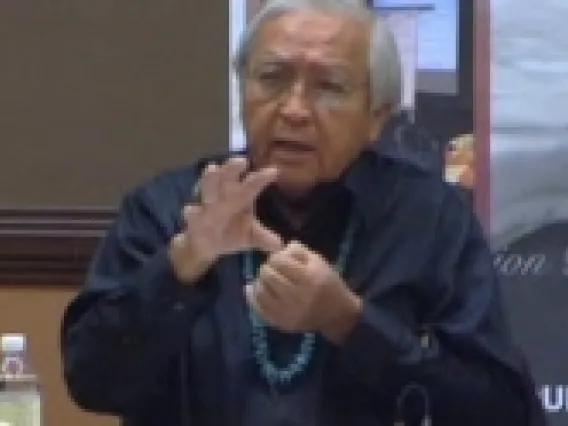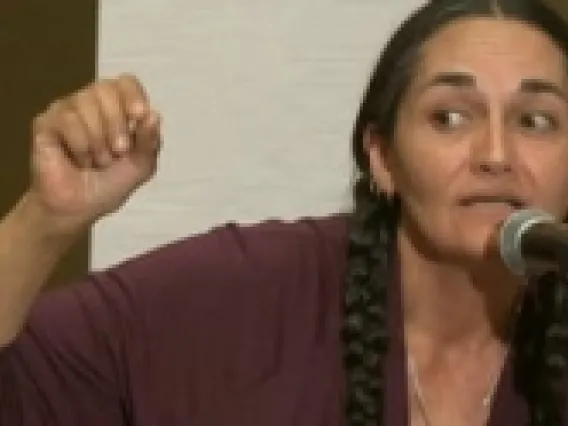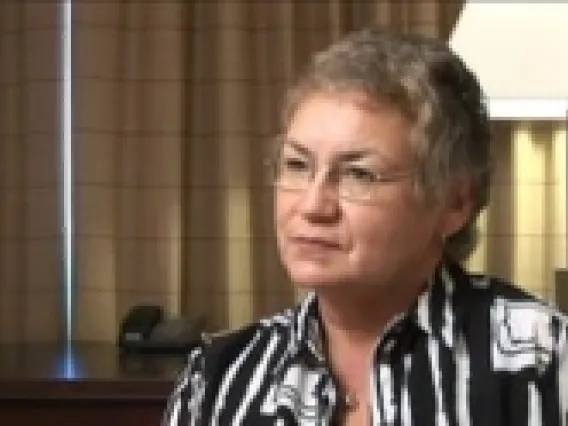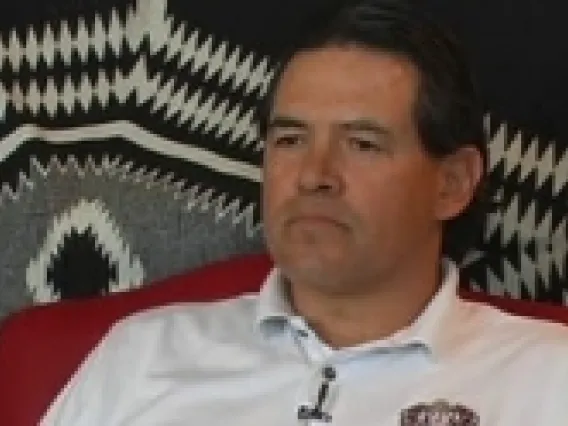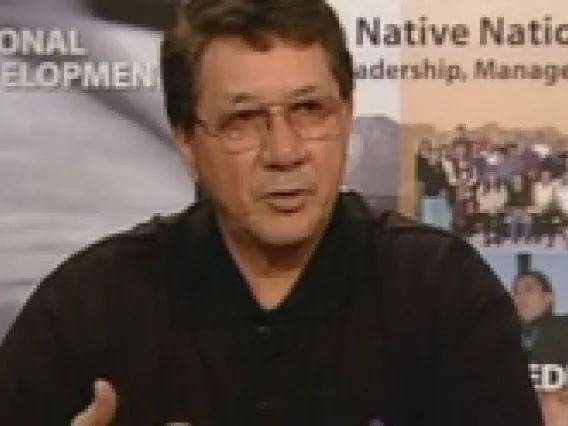DEVELOPING
What kind of constitution
do we need?
Considerations in the constitutional reform process
1 | Does our Native nation need to LAUNCH A constitutionAL PROCESS?
As Native nations reclaim self-governing power, they are returning to some fundamental questions: What kind of nation do we want to be? What do we want to protect? What do we want to change? Do we have the governance tools in place to accomplish those things? What kind of a constitution do we need?
Some of these questions–such as “What kind of nation do we want to be?”–are strategic questions that require nations to think hard about the future they want for coming generations.
But once a nation is clear about the strategic direction it wishes to pursue, it then has to ask whether it has adequate governing tools in hand. These are constitutional questions. Answering them begins by taking a good look at the nation’s current governing system. If citizens determine that the governing system is ineffective, insufficient, or inappropriate, constitutional reform may be necessary. This could involve a few amendments, major revision, or the creation of a new constitution altogether. Through constitutional reform, Native nations have the opportunity to create governing systems that have the support of their people and are effective.
It is helpful to answer some big-picture questions before embarking on a detailed assessment of the nation’s governing structure. Answering these questions first can provide guidance once detailed discussions get underway.
Questions to Consider:
- Where does our current (written or unwritten) constitution come from?
- Does it express our own core values?
- Does it effectively communicate who we are as a people and what matters to us?
- Do our people view the current constitution as our constitution or as someone else’s idea of how we should govern?
- How well does our current governing system work? Would we describe it as effective or ineffective?
- Does our current constitution give our nation the tools it needs to achieve its goals?
- Is the constitution clear, and is it enforced? Do our citizens understand it? Do our leaders live by it?
Related Resources:
An assessment of the nation's current (written or unwritten) constitution usually begins with some key questions: “What’s working?” and “What isn’t working?” For example:
- Are the roles and responsibilities of the different parts of our government clear?
- Do our lawmakers (legislators/councilors) and our community members understand the extent of our lawmakers’ authority? What do they have authority over, and where are the limits of that authority?
- Does our chief, president, or other senior leader and our community know the full extent of the authority vested in our senior leader? What can the leader do, and what can’t the leader do?
- Does our nation have an established method for resolving disputes? Does it work? Does the community respect it? Is it insulated from the politics of the moment?
- Are the criteria for citizenship in our nation clear? Do our citizens know not only what their rights are as citizens, but what their obligations are as well?
- Is there a clear process for replacing leaders, whether through elections or some other system? Does that process have the support of our nation’s citizens? Is it enforced?
- Is there a clear process for making nation law? How is that law enforced?
The answers to these and other questions provide guidelines for how the nation is governed. If some of those guidelines aren’t working, they may need to be replaced. If some are working, then they offer a framework to build on.
Questions to Consider:
- What governing tools need to be fixed within our nation?
- What written constitutional provisions should stay the same? What should change?
- How are roles and responsibilities separated?
- How do we know if our community trusts our Indigenous nation's elected government?
- What is our elected government's scope of authority?
- What authority do external governments have within our nation?
Related Resources:
Assessing what is and isn’t working in the current constitution should help a Native nation’s citizens decide how much change their governing system needs.
Perhaps the constitution is one people believe in, but the leadership of the nation doesn’t follow it. In that case the problem is not the constitution but the enforcement of it.
Perhaps it is not the constitution itself, but the statutes and codes of the nation that need changing. In that case, new tribal legislation that addresses the governance concern would be appropriate.
Perhaps the current system works well and has the support of the community, but a few aspects of the overall structure limit the effectiveness of government as a tool for achieving the Native nation’s goals. In that case it may be that only minor changes in the form of constitutional amendments are required.
Perhaps the constitution fails to meet the Native nation’s governance needs or is at odds with community values, and constitutional amendments alone cannot address community concerns. Then the nation will need to design a new constitution altogether. (This is the case with some older tribal constitutions in the US that were adopted in response to the Indian Reorganization Act.)
Questions to Consider:
- When we analyzed “what is and isn’t working in our current governing system?” what did we learn? What issues came up?
- If we have a written constitution, do we think we can amend it in ways that address the issues we identified in our analysis? Or should we consider not amendments but a major constitutional overhaul?
- If we don’t have a written constitution, should we consider writing one, and what issues do we need to be particularly concerned with?
Related Resources:
Despite external pressures to eliminate traditional governing practices and structures, a number of Native nations include them in their contemporary governance systems. For example, there are present-day constitutions in which spiritual leaders appoint decision-makers, clans send representatives to a legislature, chieftainships are hereditary, and villages continue to govern in non-western ways. There is no necessary conflict between traditional practices and contemporary governance. In fact, Native nations often benefit from incorporating traditional practices into contemporary governance not only because some of these older practices are effective but also because citizens may be more likely to view the government as truly “their own.”
A question for current constitution writers to ask is this: do citizens believe that traditional ways of doing things are still appropriate and effective for particular governance tasks? If the answer is yes, then including these traditional ideas or practices in the nation’s constitution may be appropriate. Alternatively, a community could indicate in its written constitution that certain activities will be governed by traditional practices without specifying what those practices are. Yet another option is for there to be broad community understanding about what areas of community life are governed by the written constitution and which are subject to traditional governance. The distinction is then taught and reinforced through daily practice and community teachings.
Questions to Consider:
- Does our current governing system include any traditional ways of governing?
- Do we have governing traditions that are different from our current ways of governing but that might be useful and effective in today’s circumstances
- Would the community support the use of more traditional governing practices
- Can we strengthen our system of government and its ability to pursue the nation’s goals by incorporating some traditional practices? Which ones?
Related Resources:
2 | Key questions our Native nation may want to address in our constitution
Whether written or unwritten, traditional or contemporary, constitutions are tools of governance that articulate the foundational rules a Native nation uses to govern. Those rules answer fundamental questions such as:
- What is our purpose?
- How do we determine who is a part of us?
- How are roles and responsibilities divided?
- How are laws made and enforced?
- How are disputes resolved?
- How are leaders chosen?
- How do we relate with other peoples and governments?
In revising a constitution or drafting a new document, these are key questions a Native nation may want to address.
A number of Native nations have used their constitutions to make statements about who they are and how they see themselves in relation to the world. These ideas affirm the ways that people identify with the nation and reinforce the nation’s long-term existence as a cultural and political community. They reflect kinship, connections, relationships, and ties, and they emphasize community members’ shared history. Such statements generally appear in the preamble or other leading sections of a constitution. They often reference origin stories, sacred lands and history, treaties, jurisdictional boundaries, or the nation’s sovereignty.
For example, the preamble to the Yurok Tribe’s constitution reinforces the Yurok people’s identity and their inherent sovereignty. It begins,
“Our people have always lived on this sacred and wondrous land along the Pacific Coast and inland on the Klamath River, since the Spirit People, Wog-e’ made things ready for us and the Creator, Ko-won-no-ekc-on Ne-Âka-nup-ceo, placed us here. From the beginning, we have followed all the laws of the Creator, which became the whole fabric of our tribal sovereignty.”
Citation: Constitution of the Yurok Tribe, ratified November 19, 1993. (http://www.yuroktribe.org/government/councilsupport/documents/Constituti..., accessed October 6, 2015)
Questions to Consider:
- How does our origin story inform who we are as a people? What core values and guiding principles does our origin story include?
- How do we express who we are?
- How should we articulate who we are in our written constitution?
Constitutions In Action:
Little Traverse Bay Bands of Odawa Indians: Preamble Excerpt
Osage Nation: Preamble Excerpt
Related Resources:
Constitutions often are a place in which the people of a nation state their values, long-term goals, and aspirations. Such statements may reflect the people’s vision for their nation and the kind of community they want for future generations. These declarations often appear in the preamble to a constitution or in a statement of purpose.
Putting such ideas into a constitution may help the nation’s citizens understand the purpose of self-government and may help non-citizens understand why the nation does the things it does. For example, in the preamble to its constitution, the Coquille Indian Tribe states:
The Coquille Indian Tribe is and has always been a sovereign self-governing power dedicated to:
1. Preservation of Coquille Indian Culture and Tribal Identity.
2. Promotion of social and economic welfare of Coquille Indians.
3. Enhancement of our common resources.
4. Maintenance of peace and order.
5. Safeguarding of individual rights of tribal members.
Our ancestors have passed on to us a sacred trust and obligation to maintain and safeguard these goals. In recognition of this sacred responsibility, we, the members of the Coquille Indian Tribe, being a federally recognized Indian tribe pursuant to the Coquille Indian Restoration Act of June 28, 1989, 103 Stat. 91, hereby adopt this constitution in order to re-affirm our tribal government and to secure the rights and powers inherent in our sovereign status as guaranteed to us by federal and tribal laws.
Questions to Consider:
- What are our nation's goals?
- Who has helped define our goals?
- To what extent does our written constitution explain how to achieve those goals?
See This In Action:
Poarch Band of Creek Indians: Preamble Excerpt
Carcross/Tagish First Nation: Preamble Excerpt
Related Resources:
Self-government includes the authority to determine who is–and who is not–a citizen of the nation. This can be a contentious issue, as there often are resources at stake: rights, entitlements, services, and other goods. Some nations have set citizenship issues aside as they work on other aspects of their constitutions. Others have confronted citizenship issues head-on.
Constitutions often specify both the criteria for citizenship and the obligations or responsibilities of citizens. Criteria vary. While some nations continue to use externally imposed blood quanta or marriage rules to determine citizenship, others–drawing on long-standing traditions–are relying on kinship or cultural criteria. Other examples of citizenship criteria include residency requirements, lineal and lateral descent, naturalization, and adoption. Obligations or responsibilities may include a range of activities or commitments, from always acting with future generations in mind, to respecting Indigenous lands, to fulfilling ceremonial and cultural responsibilities, to upholding the constitution itself.
In both the U.S. and Canada, some Native nations are replacing the terminology of membership with the terminology of citizenship or kinship, recognizing that a Native nation is not a club; it is a nation.
Questions to Consider:
- How did we traditionally determine who was a part of us?
- Today, how do we determine who is a part of us?
- To what extent are our core values and guiding principles reflected in our current citizenship criteria?
- What is our long-term vision? What citizenship criteria do we need to realize our envisioned future?
Constitutions In Action:
Osage Nation: Citizenship Excerpt
Tule River Indian Tribe: Citizenship Excerpt
Fort McDermitt Paiute and Shoshone Tribe: Citizenship Excerpt
Related Resources:
The tasks of governance are many, and they often are complex. Because of this, most human societies divide these tasks into different roles or responsibilities. For example, many Native nations had separate roles for medicine people, peace chiefs and war chiefs, warrior societies, women’s societies, those who hunted and those who planted, those who made law and those who enforced it, town criers, and so forth.
In western European political traditions, such role distinctions might be called “separations of powers” or “checks and balances.” Some have argued that in Indigenous traditions, these differing roles might be thought of as “allocations of responsibilities.” Regardless of the terminology used, these descriptions of roles specify how authority is organized and exercised within a government: Who does what? Such allocations of responsibilities help prevent any one person or group from having too much power or misusing power for their own benefit. They also can increase the effectiveness and resilience of a governing system.
Questions to Consider:
- Who should be doing what in terms of elected, or appointed, governance roles?
- Who has responsibility over what governance aspects?
- Which decisions should be made by our traditional leaders, elected council, another body, a community member, or by our nation as a whole?
Constitutions In Action:
Indigenous governments’ decision-making occurs in a variety of ways. Some decision-making processes require consensus among the participants, achieved through intentional and often extensive discussions. According to the Teslin Tlingit Council’s Constitution, for example, each of the four branches of government–the General, Executive, Elders, and Justice Councils–must use a consensus method in making governmental decisions. Voting is another common decision process, in which decisions are made by majority rule. Many Native nations’ legislatures use voting to create statutes and make resolutions. A single individual–a tribal chair or president, a spiritual leader, a tribal judge or peacemaker, the chairperson of a council committee, or a tribal administrator–might make other decisions. For example, the cacique (spiritual leader) of Pueblo de Cochiti annually chooses the six senior officers of the Pueblo.
Ideas concerning how decisions are made are closely related to the question of who makes a decision (see previous section “Who has responsibility for what?”). Sometimes, knowing who will make a decision determines how it will be made, as in the example of the Cochiti cacique.
Specifying how major decisions will be made is a common function of a constitution, either written or unwritten. But as the above examples suggest, no one approach to decision-making is likely to work for everyone or for every issue. The questions to ask are: Will our nation’s citizens view this decision-making approach as appropriate? Can it meet the challenge of governance in today’s environment?
Questions to Consider:
- Who makes the decisions in our community?
- Which decisions should be made by our elected, or appointed, council, chairperson, tribal court, or other governing body?
- Which decisions are best made by our nation as a whole?
- How are our citizens included in our decision making processes?
Constitutions In Action:
A nation’s laws establish rules for behavior and action and provide predictability in interactions among citizens, businesses, other entities, and the nation’s government. Historically, Indigenous law arose from spiritual beliefs and practices, long-held customs, and cultural teachings. Today, many Native nations have found it useful to augment traditional law with contemporary law, especially as they encounter situations, opportunities, and responsibilities outside the domains addressed by customs and tradition.
In contemporary contexts, many Native nations’ constitutions delegate authority to a representative council/legislature to make law through statutes, ordinances, and/or resolutions. Some Indigenous constitutions incorporate citizen participation into law-making processes through a general council or people’s assembly (where every adult citizens is effectively a member of a legislature) or initiative or referendum procedures (in which select questions are put before all voters at election time).
In general, a Native nation’s laws are enforced through community teachings, social expectation, admonitions from family members, and official mechanisms like police and court systems. Some nations, such as the Pascua Yaqui Tribe, have both western and traditional police who have different or enhanced roles depending on the season of the year or the progress of a ceremonial cycle.
Questions to Consider:
- Where do our laws come from?
- What process do we use for making new law or, if necessary, reaffirming customary law? And what roles do citizens, legislators, and others have in that process?
- Do our laws reflect the core values of our community?
- What provision do we make for the effective enforcement of our laws?
Constitutions In Action:
Pueblo of Santa Clara: Legislative Functions Excerpt
Skokomish Indian Tribe: Initiative & Referendum Excerpt
Confederated Salish and Kootenai Tribes, Constitutional Bylaws: Legislative Functions Excerpt
Related Resources:
All human societies eventually have disputes. The challenge is to have a mechanism for resolving disputes that prevents them from tearing the community apart.
Historically, Indigenous communities had diverse methods for resolving disputes and enforcing agreed-upon rules—often embedded in shared cultural understandings about how things should be done—that guided acceptable behavior. If rules were violated or if individuals or groups came into conflict with each other, these mechanisms could be used to restore social and spiritual order. Such mechanisms might invest certain persons, societies, or groups with responsibility to resolve disputes fairly and in concordance with the nation’s culture.
Native nations today face the same need for mechanisms that can effectively defuse conflict, resolve disputes (including disputes within government itself), and restore order. It makes sense to include such mechanisms in a constitution, giving those mechanisms a high degree of authority to act on behalf of the nation.
Such mechanisms may include courts modeled after those of the colonizers that use adversarial approaches to disputes, trying to determine who’s right, who’s wrong. But some nations use traditional dispute resolution practices, such as peacemaking or other forms of restorative justice, either in place of western courts or as an alternative to them, or to address certain kinds of issues or disputes.
A constitution can strengthen this judicial function by specifying the powers and responsibilities of the nation’s courts or other dispute resolution mechanisms, their relationship to the other parts of the nation’s government, how judges or other decision-makers will be chosen, how to assure competence and impartiality in decisions, and so forth.
Whatever the form a dispute resolution system takes, its long-term success depends to a large degree on whether the citizens of the nation see it as fair, culturally appropriate, and effective. That can best be achieved by making sure it is independent of day-to-day politics and staffed with people known for their integrity, competence, and cultural understanding.
Questions to Consider:
- Traditionally, how did our nation resolve disputes?
- What core cultural values and principles should govern the administration of justice?
- What court(s) or other mechanisms for resolving disputes does our nation have? How are our dispute resolution mechanisms organized (appellate courts, inter-tribal courts, supreme court, wellness courts, peacemaking, etc.)?
- From where do such mechanisms get their authority (custom, constitution, statute, etc.)?
- How do we keep them free from political interference in decisions?
Constitutions In Action:
Toquaht Nation: Judiciary Functions/Dispute Resolution Excerpt
Nisga’a Nation: Judiciary Functions/Dispute Resolution Excerpt
Ione Band of Miwok Indians: Judiciary Functions/Dispute Resolution Excerpt
Choctaw Nation of Oklahoma: Judiciary Functions/Dispute Resolution Excerpt
Related Resources:
Methods of choosing leaders vary from nation to nation. Some rely on ancient practices in selecting leaders. Individuals might be chosen from specific clans, societies, or families or be put forward by senior men or women in the community as unopposed candidates for office. Other nations, under the influence of external pressures or requirements imposed by other governments, use community-wide voting as their primary method. Their constitutions may specify qualifications for office, such as criteria concerning age, residence, and integrity (no criminal record, for example), as well as the processes by which elections take place.
Nations that use elections as the primary method of choosing leaders have to consider how to make sure election processes are transparent and are viewed in the community as fair. One way to do that is to establish an election commission with the authority to run elections and an election code specifying steps to assure transparency and fairness and specifying how election disputes will be resolved. The nation’s constitution could provide for such a commission and code, insulating both from political interference by those currently in office while leaving the operational details up to the commission and those developing the code.
Those nations that don’t use elections as primary methods of choosing leaders may want to specify in their constitutions how leaders will be chosen and by whom.
Nations also vary in what they expect or require of leaders in the way of skills, knowledge, or preparation. Some nations in the U.S. have begun to require specialized training in governance or evidence of substantial cultural knowledge in those who seek political office.
Historically, customary law and shared community expectations of appropriate behavior tended to keep leadership accountable to the community. Leaders who overstepped their authority or appeared to be serving themselves instead of the nation were likely to be replaced or to experience other repercussions, teaching them that they were not above the law.
Today, while accountability may still rely to some extent on cultural protocols and community pressure, constitutional provisions, laws, or specialized codes can provide powerful enforcement as well. Some Native nations’ constitutions provide for a recall election when a political or judicial leader takes action outside the boundaries of his or her authority. Some nations have adopted conflict of interest rules and specify redress procedures (up to and including recall) if the rules are violated. And some nations allow questions about appropriate roles and responsibilities to be heard in their courts or equivalent methods of resolving disputes.
For example, in 2000 in the United States, the Citizen Potawatomi Nation’s Business Committee—its primary governing body—sued its Chairman for undertaking duties beyond the scope of authority specified for that office in the nation’s constitution. The case ended up in the nation’s court system and ultimately resulted in a constitutional amendment clarifying the Chairman’s powers (Citizen Potawatomi Business Committee v Barrett, 7 Okla. Trib. 310 (Cit. Band Potawatomi Sup. Ct. 2001))[CSE(1] .
Questions to Consider:
- How are our leaders chosen?
- Is our current process of choosing leaders viewed by the community as fair, culturally appropriate, and free from damaging political interference? If not, what changes do we need to make?
- Do we make clear what we expect of our leaders in the way of knowledge, skills, integrity, and behavior?
- Once in office, how are our leaders held accountable to the community and its expectations?
- Does our constitution include enough information to effectively guide the nation’s leadership selection process?
Constitutions In Action:
Pueblo of Laguna: Elections Excerpt
Gila River Indian Community: Legislative Functions Excerpt
Hoopa Valley Tribe: Recall, Removal, & Vacancies Excerpt
Related Resources:
Most Native nations have long histories of relationships with other nations. Historically, most were involved in elaborate trade networks; many collaborated with each other; inter-nation disputes had to be negotiated and resolved. In short, intergovernmental relations were a major part of the Native nation experience long before Europeans arrived in North America.
Over time the nature of these relationships and the governments involved have changed. Now Native nations interact frequently not only with each other but also with the governments of countries, with state and provincial governments, and with local (county, shire, borough, city) governments.
A Native nation may want to specify in its constitution how such relationships are to be handled. Who will be responsible for those relationships? Are there particular rules or principles that the nation thinks should guide those relationships? How will the nation try to maintain relationships that are both respectful and productive?
The constitution also may need to specify the nature of intergovernmental relations within the nation: those among districts, villages, or other communities. This is especially the case where there may be long traditions of local autonomy. These relationships are also a type of intergovernmental relations, and both citizens and outsiders will look to the constitution (written or unwritten) to know how those relationships should be organized and who has authority over what.
For example, the Hopi Nation consists of twelve independent villages that have jurisdiction over matters that occur within their boundaries and among their members. Issues on which these villages must collaborate include (among others) conflicts that arise between them, development opportunities that jointly affect them, and whether and how they will manage collective resources. At Hopi, some of these relationships still are governed by the nation’s oral constitution. Among the eight villages that work together through a formal, written constitution, these relationships are governed by that document.
Intergovernmental agreements serve as critical nation-building tools that enable a Native nation to advance its policy agenda, enhance its economic opportunities, improve and expand the delivery of services to its citizens, forge beneficial relationships with outsiders, and better utilize scarce resources.
Questions to Consider:
- How do different layers of government within our nation relate to each other?
- What formal, cooperative agreements with non-Native governments does our nation have, and in what areas (trade, social services, law enforcement, taxation, natural resource management, etc.)?
- What process do we have for building such relationships? What part or parts of our government should carry responsibility for these relationships?
Constitutions In Action:
Standing Rock Sioux Tribe: Distribution of Authority Excerpt
Hopi Tribe: Governmental Structure Excerpt
Nez Perce Tribe: Legislative Functions Excerpt
Related Resources:
Those drafting constitutional changes cannot anticipate all future developments. When constitutional language is too specific, it runs the risk of becoming outdated as circumstances change. It’s more important for a constitution to outline the nation’s governing principles, the relationships among the parts of government, the distribution of authority in decision-making, and the roles of both leaders and citizens in government than for it to provide detailed descriptions of how everything should be done. Overly specific language can cripple government by tying it to processes that may become obsolete under changing conditions.
This means that constitution drafters should consider carefully how much detail they put in the constitution and how much can be left to legislation or other ways of establishing rules for how things should be done. For constitutional purposes, principles, values, and distributions of authority matter more than the details.
Related Resources:
3 | Some emerging trends in constitutional change
As the number and diversity of Indigenous nations reclaiming self-governing power continues to grow, so do the range and diversity of their constitutional solutions to particular governing challenges. But a number of trends in constitutional change are emerging, including:
A constitution can be more than simply a guide to how a nation operates and pursues its goals. It can be as well an expression of a people’s identity and culture.
With this in mind, some nations have incorporated origin stories and other statements of identity, core values, or connections to place or homeland in their constitutions, often in preambles or other opening statements. Others, as already suggested, bring those values or customs into the organization of government itself, from how councils or legislatures are organized to how disputes are dealt with, from who makes which kinds of decisions to how leaders are chosen or prepared for office.
Some Native nations also are emphasizing traditional languages in their constitutions. All or part of the constitution may be written in the traditional language or presented in both the relevant Native tongue and the language most citizens use today. Some constitutions highlight the nation’s own language as a repository of critical knowledge or as a priority for preservation and use. Some nations even require that certain public officials be fluent in the Native language.
Constitutions also offer an opportunity for Native nations, should they wish to do so, to draw attention to critical aspects of their histories or their relationships with other nations or governments. Some Native constitutions refer to treaties that played formative roles in those relationships. Others refer to ancestral lands or lost lands that retain particular significance for the nation. By referring to such things in a constitution, a nation not only is emphasizing certain spiritual or moral relationships but is making clear that it views those relationships as core parts of its identity and nationhood.
Constitutions In Action:
Haida Nation's Preamble
One of the most destructive effects of settler colonialism was to reorganize and even eliminate Indigenous nations to fit the convenience of the colonizers. As they expanded their power over Indigenous peoples, the colonizers dispersed some, moved many, broke others into fragments, and forced still others together. It then built new, imposed group boundaries into the administrative structures of Indigenous affairs.
Some nations are using constitution-making or constitutional reform to reverse some of these reorganizational processes. As they struggle to reassert self-governing power, they are reconsidering who they are, deciding whether to accept or to challenge the organizational consequences of colonialism. In such cases, constitutional processes may include mending broken relationships among some communities, rebuilding collective identities, and reclaiming older understandings of nationhood.
Related Resources:
In many Native nations, the primary way that citizens participate in government is through voting, and some people see this as a hallmark of democracy. But democracy doesn’t depend on voting. The core democratic idea is that the power of government comes from the consent of those being governed. The people empower those who govern them. But voting is only one way that the people might express that consent. For example, the citizens of a nation might choose to delegate their power of consent to certain groups, such as clan mothers or elders, agreeing that ultimate authority will rest with those groups and that the people will abide by their decisions. Or ultimate authority may rest in a body of customary law that says, in effect, “this is how we govern” and to which citizens defer.
In such systems, citizen participation in government is not limited to election day. In fact, some Native nations have no elections, finding other ways to select leaders and determine strategic priorities. In such situations, citizen participation may be found in ongoing dialogues among kin groups or in specialized societies. It may be found in the patterns of daily life in which citizens demonstrate, through their behavior, their approval of their nation’s established ways of governing. As long as citizens have the opportunity freely to disagree with what their nation does, the absence of disagreement is itself a form of consent.
Some Native nations today are working to increase citizen participation and transparency in government. For example, some require that legislative sessions be open to citizens under all but exceptional circumstances; others broadcast legislative sessions over the radio or on the internet unless certain topics, such as personnel issues or proprietary information, are being discussed. They thereby help citizens stay informed. Some mandate community meetings to consider specific decisions that are thought too important to be left to the legislature or executive alone, seeking feedback and wisdom from the community.
There are other opportunities as well for citizen participation in government, through appointed positions on boards that oversee agencies such as housing authorities, election boards, or child welfare agencies. Recall provisions offer another way for citizens to hold officials accountable, while referendums allow for direct participation in creating new laws.
The challenge is to assure that citizens have ways to voice their views, can do so safely, and can do so without sacrificing efficacy—the ability of government to get things done—in the process.
Governments have to balance opportunities for change with the need for continuity. Those in leadership whose efforts fail, who lose touch with the community, or who violate the trust of their people risk being removed from office. However, a constant cycle of “out with the old, in with the new” makes it difficult to sustain policies and forces those in office to spend more time campaigning and less time governing. Adding new leaders to the government can provide fresh perspectives, but nations also benefit from institutional stability and continuity.
Many Native nations have recognized the importance of this balance and have pursued two related reforms in their constitutions: longer terms of office and staggering those terms. Longer terms—often moving from two-year terms of office to three- or four-year terms—allow leaders to switch from short-term policies to long-term strategic visions and allow them to focus more on governing and less on campaigning. Staggered terms—in a council structure, for example, having only half the council up for election at a time—provide both stability and institutional memory, avoid the possibility of having to build a government from scratch each election. They also reduce the potential for major upheavals in each election cycle.
Related Resources:
The current constitutions of many American Indian nations were first developed under U.S. federal guidance in the first half of the twentieth century. Many include clauses requiring that certain decisions—ranging from choice of legal counsel to natural resource development to business regulation—be approved by the U.S. Secretary of the Interior before they take effect. The most common such clause requires secretarial approval of constitutional amendments, giving the U.S. government a direct hand in determining how a Native nation will organize itself and govern.
In recent years, realizing that such clauses undermine self-determination and self-government, a number of Native nations in the U.S. have removed secretarial approval clauses from their constitutions. Doing so has no impact on a nation’s eligibility for federal services or on its other powers.
"Our people have always lived on this sacred and wondrous land along the Pacific Coast and inland on the Klamath River, since the Spirit People, Wog-e’ made things ready for us and the Creator, Ko-won-no-ekc-on Ne-Âka-nup-ceo, placed us here. From the beginning, we have followed all the laws of the Creator, which became the whole fabric of our tribal sovereignty.”
–Constitution of the Yurok Tribe, ratified November 19, 1993.

